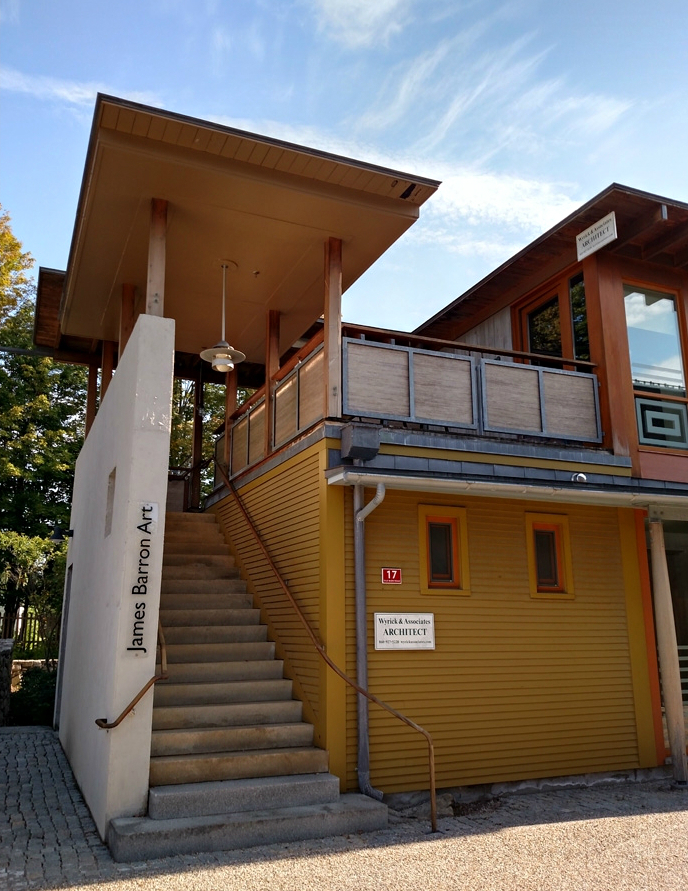The Rural We: James Barron
The Kent, Conn. gallerist gives talks on environmental activism.

The Kent, Conn. gallerist gives talks on environmental activism.

James Barron studied art history at Brown University and began his career at New York’s Knoedler Gallery in 1980. He opened his own gallery, James Barron Art, in Kent, Conn. in 2014. Barron, who divides his time between Kent and Rome, Italy, has sold works by Picasso, Matisse, Arp, Giacometti, Pollock, Warhol and many others. His gallery has an ongoing series of interviews with artists and art historians, and has hosted music and dance performances, as well. On Saturday, June 15, the gallery will welcome author Dani Shapiro, and on Saturday, June 22, Barron himself will give a presentation and facilitate a discussion on climate change, based on his recent participation in Al Gore's Climate Reality Trainee Program.
I’ve been an art dealer since 1980. After college, I got an internship at Knoedler Gallery in New York, which was one of the oldest and most prestigious galleries in the world, going back 165 years. Then I worked with the Jan Krugier Gallery in Geneva and we represented the Marina Picasso collection. I began private dealing in 1987, lived in Rome for 11 years, and did art fairs all over America — in Miami, LA, San Francisco, Aspen. In 2014, we moved back to Kent where we’ve had a home for decades, and immediately opened the gallery. We wanted to start with a big splash — a wall drawing by Sol Lewitt — and we kept it up for two years. He’s really one of the most important Connecticut artists.
We try to do museum-quality exhibitions and we’re proud to have a space for the community; we have many public events for people who many not be coming here for an art gallery. We’ve had Pilobolus, the Sherman Chamber Ensemble, and curators from all over the country. On June 15, we’ll have a reading with Dani Shapiro. On June 22, I’ll give a talk on climate change.
When I was 16 and in high school in Winnetka, IL, I took a course on ecology, which changed my life. I’d always been interested in nature and the outdoors. I’m from the Midwest, so we’d been camping in the Wind River Mountains in Wyoming, and skiing and hiking in Colorado. The course had field work and I went to a creek that came from a very high bluff from Lake Michigan. My friends and I would always say ‘OMG, this stinks!’ so I decided to test the water. And it turns out this enormous mansion had sewage going directly into the lake. I went to the owners and said "you’re going to have to clean it up." They said no and that I was trespassing, but it’s actually public property. I told them I was going to the press, and I went to the local paper and they had to clean up their water. That was the beginning of my environmental activism.
Flash forward, I’m flying back from an art show in Switzerland and watching the Inconvenient Truth sequel. I was crying that we were being so stupid not to pay attention to climate change and make it a worldwide priority. At the end of the film, they said that you could apply to the Al Gore Climate Reality Trainee Program. I went online, on the plane, and applied.
I went to the program last August in Los Angeles; there were 2,200 trainees from over 40 countries. There were people from all over the world, and I was extremely moved that no one was there to sell anything and we were all there for a common purpose — to save our planet. I like that this fight crosses so many barriers: race, economy and age. With the program comes a promise that each attendee will give talks throughout the year. I’ve spoken to a wide range of people and I try to begin by saying this is not a political talk, this is about how we do not have the right to hand our kids and their kids a colossal mess. We have to address this problem now. We’ve taken many steps back since the Trump presidency and that can be a difficult hurdle, but I don’t want it to be about him.
I’m proud that these talks have had an influence and I’m going to continue to do them. When Al Gore was speaking, he was brilliant and mesmerizing, he had more of a fire in his belly now that when he was VP. He calls himself a recovering politician and feels that he can have an effect through his conferences and his environmental activism.
What struck me more than anything were the stories I heard from all over the world — people in Africa whose wells had run dry and whose fields were as hard as cement, or people who live near glaciers and have been watching them recede.
How we could be so nearsighted when we know that our cities could be under water is beyond me. I like that my gallery can be a place for a public forum. I’m really passionate about this. I was 16 when I started and I’m 61 now when I’m going back into it.

